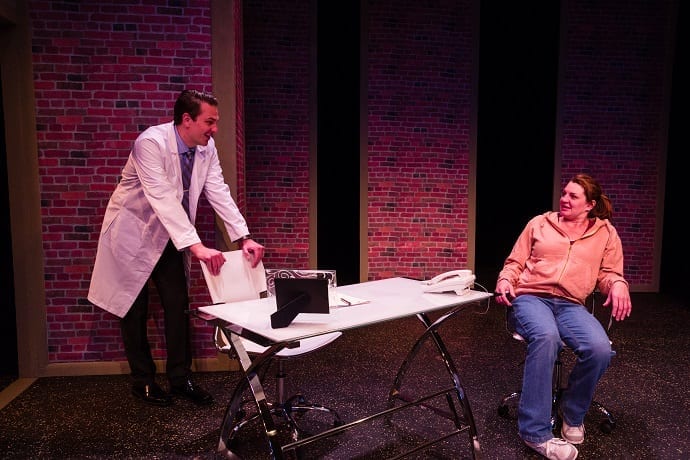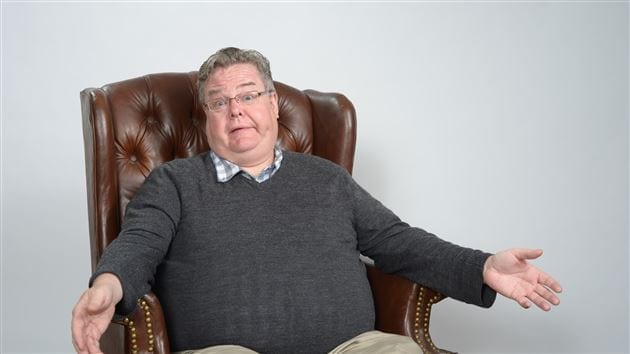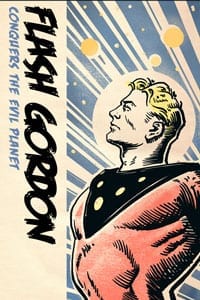Salt Lake City — It’s likely that you know someone successful. They may be doing well financially, hold a position of great influence, or be admired by those around them. They’ve “arrived,” you could say. If you were to ask that person how they attained the life they have now, what would their answer be? David Lindsay-Abaire‘s Good People is a story about classmates who grow to lead vastly different lives. It is about whether we create a better life, or simply luck into one.
Margaret (Nell Gwynn) is a middle-aged high school dropout, who is fired from her dollar store job in the first scene of the play. Growing up in the south end of Boston meant she grew up poor; getting pregnant as a teenager didn’t improve her economic situation. Margie’s search for another new job, an income, a means to provide for her handicapped daughter, is the driving force of the plot. Margaret finds it difficult to care for her special needs daughter and be a responsible employee. Her boss Stevie (Gordon Dunn) is much younger than Margie, but holds a management position. Throughout the production, director Robin Wilks-Dunn emphasized the concepts of hierarchy and status through his blocking, as he did in the opening scene: Margie sits down after she gets fired, leaving Steve in a higher position visually. Lindsay-Abaire’s script explores the ideas of young versus old, male versus female, and rich versus poor; and I was excited that Wilks-Dunn explored these themes physically.
Among the poor in Margaret’s life are her “friends.” I use quotes because the characters often dislike each other, and yet continue to spend time together, much like quarreling siblings. Dottie (Dee Macaluso) is Margaret’s landlord, who buzzes in her ear about the rent, but also helps care for Joyce, Margie’s daughter. I was fond of Maculuso in the first scene: the way she gestured dramatically, one time illustrating what a lopsided bunny head looks like, and her very expressive mouth. She was seated at the kitchen table facing the audience, giving a full view of her face; but when she remained so for the entire scene, the staging began to feel forced. Maculuso had some crazy lines as Dottie, who was never bashful in her opinions.
Steve was another of Margaret’s companions, despite axing her from her job. He sits with her group at bingo and does genuinely care about her. The character of Jeannie was played by Stephanie Howell, and I applaud the charm she infused into her role. Howell was fun and fierce, amiable, and easily annoyed as she encouraged Margie in one breath and chastised the others in the next. Dottie pretty much drove Jean crazy. I was pleased that Howell’s appearance matched her unique personality. She had teased, sort of 1980’s hair, dangly earrings, and neon shoelaces—lots of color. Margaret was attired more simply; she looked clean, but tired and broke. I appreciated these costumes, which were designed by Brenda Van der Wiel.
In Margie’s job hunt, Jeannie mentions Mike, a mutual friend from high school (played by Robert Scott Smith) who might have a job opening at his office. Margie and Mike dated in school, but now he is an affluent and articulate physician. When she meets him at his work, the conversation between them is stop and go, like any high school reunion would be. Margie is proud of Mike’s success, which Gwynn shows well, along with the sadness at their vast differences. Her dialogue reveals her insecurities, as she calls herself fat, dumb, and “not fancy.” I felt bad for Margie in that scene. She did get in a few jabs about Mike’s new snobby life, but ultimately settled on telling him, “You’re good people.” The scene in Mike’s office had him positioned behind a desk at first, indicating that he was the professional. As the two dance back and forth verbally, Margie takes a turn at the desk and then moves back again to her chair; it’s another interesting visual concept by the director. When Smith puts on his white doctor’s coat, too, it feels very symbolic.
A misunderstanding leads Margaret to Mike’s home, where the audience meets Mike’s wife Kate. Michelle Patrick presents a posh and refined Kate; dressed in tailored pastels, she even crosses her ankles when seated. Her physicality and manner of speaking set her far apart from Gwynn’s Margie. The initial formality of the scene falls to pieces when Mike attributes his success, his escape from “Southie,” solely to his own hard work. This hits a nerve with Margaret, who has worked hard, too, and yet still struggles far below. Many sensitive subjects and revelations are included in the dialogue, including marital problems, deception, racism, prejudice, and class structure. This emotional environment is tough for the characters, but it was not uncomfortable for me, in the audience. I attribute this to the actors, who were committed to their roles; I never questioned the authenticity of their words or reactions. Smith showed the duplicity of Mike, acting like two men unable to merge effectively. When he is nearest to his former self, Smith brings out his Boston accent, along with a more vulgar vocabulary. These three actors had to have put in a lot of work with their director to navigate the pacing and momentum of that scene. My only critique is that the bunny moment would have been more powerful if it had broken louder.
All this great acting and direction took place within Keven Myhre‘s designs. I have always been impressed by sets with a consistent background that fits many different locations. Myhre’s canvas is a brick setting with doorways. The very back of the set changes a few times, and set pieces come on and off, like in the setting of the bingo games: bulletin board, long table, and Dottie’s homemade rabbits. The brick walls are fitting in each scene, like the doctor’s office with Mike’s shiny desk, the dollar store alley-way, and Margaret’s low-rent apartment. Josh Martin‘s sound design also added so much to the play’s environment with the effects of ringing office phones and chatting church ladies. The music between scenes helped push the energy of the storyline and dialogue.
Wilks-Dunn quotes the song “Once in a Lifetime” by David Byrne in the program, and it also plays during intermission. The lyrics suggest that an individual doesn’t always know “How did I get here?” Every individual likely has a hand in their life’s outcome, but perhaps much of it is luck or fate. Salt Lake Acting Company’s production of Good People is a high-quality, engaging, and interesting piece of theater. Without time to even take off my coat and settle in, I found myself sadly at its end. As we learn from this show, there’s only so much we can control, after all.
Update: Read UTBA’s interview with SLAC executive producer Keven Myhre to gain additional insights into Good People and Salt Lake Acting Company.








